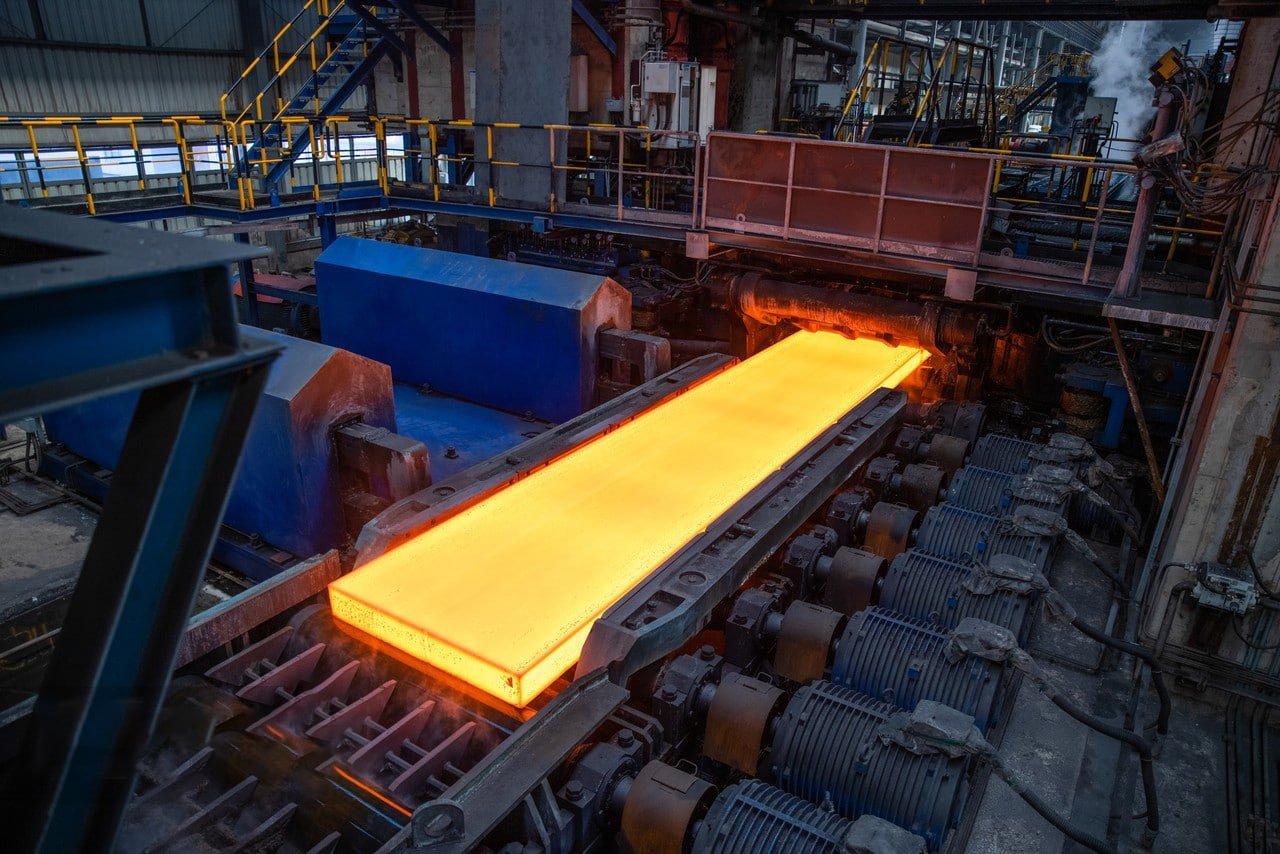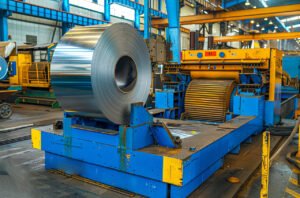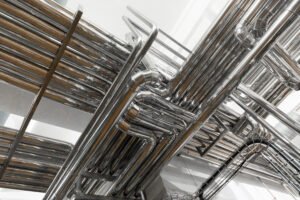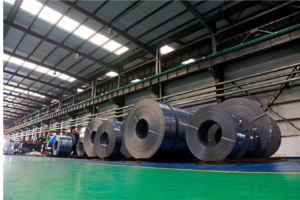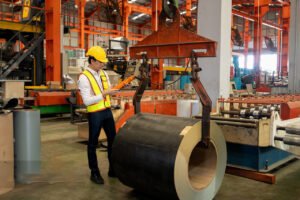What Is the Difference Between Stainless Steel Sheets and Coils?

After 15 years in the stainless steel industry, I've noticed that many customers struggle to choose between sheets and coils for their projects. This decision can significantly impact both production efficiency and costs.
Stainless steel sheets are flat, pre-cut pieces with fixed dimensions, while coils are continuous rolls of material. This fundamental difference affects everything from manufacturing processes and handling requirements to cost-effectiveness and application suitability.
Let me share insights from my experience helping clients make this crucial decision. Whether you're a manufacturer, contractor, or project manager, understanding these differences will help you optimize your material selection and improve project outcomes.
The choice between sheets and coils isn't just about format - it's about maximizing efficiency and minimizing waste. Through years of supplying both formats to industries across Asia and the Middle East, I've learned that making the right choice can significantly impact your bottom line.
How Are Stainless Steel Sheets and Coils Manufactured Differently?
Having overseen the production of both formats in our facility, I can explain the distinct manufacturing processes each requires.
While both sheets and coils start from the same basic material, their manufacturing processes diverge after rolling. Coils remain in continuous form1, while sheets are cut to specific lengths and often undergo additional processing.

Base Manufacturing Process
The initial stages are similar for both formats:
| Process Stage | Coils | Sheets |
|---|---|---|
| Melting | Same process | Same process |
| Hot Rolling | Continuous | Continuous |
| Cold Rolling | Continuous | Continuous |
| Annealing | In-line possible | Batch process typical |
Divergent Processing Steps
Where the processes differ significantly:
-
Coil Production
- Continuous rolling process
- In-line tension control
- Edge trimming while moving
- Automated coiling systems
- Quality control at high speeds
-
Sheet Production
- Cut-to-length operations
- Flatness correction
- Edge finishing
- Surface inspection
- Stacking and packaging
Quality Control Considerations
Through years of manufacturing experience, I've observed these key differences in quality control:
-
Coil Inspection
- Continuous monitoring
- Online defect detection
- Real-time thickness measurement
- Edge quality control
- Surface finish verification
-
Sheet Inspection
- Individual piece inspection
- Dimensional accuracy checks
- Flatness measurement
- Surface quality assessment
- Edge condition verification
What Are the Key Differences in Dimensions and Thickness Between Sheets and Coils?
Based on countless customer consultations, I understand how dimensional differences impact material selection and usage.
Sheets typically come in standard sizes with fixed lengths, while coils offer continuous lengths that can be custom-cut2. Thickness ranges are similar, but coils often provide more flexibility in width options.

Dimensional Specifications
Standard dimensions we commonly supply:
-
Coil Specifications
- Width: 600-1500mm (customizable)
- Length: Continuous (up to 1000m+)
- Thickness: 0.3-6.0mm
- Weight: Up to 25 tons per coil
-
Sheet Specifications
- Width: 1000-1500mm (standard)
- Length: 2000-6000mm (fixed)
- Thickness: 0.4-6.0mm
- Weight: Typically under 1 ton per sheet
Impact on Material Utilization
My experience with manufacturing clients has shown that dimension selection significantly affects:
-
Material Efficiency
- Coils: Minimal end waste
- Sheets: Fixed sizes may lead to more offcuts
- Custom cutting options
- Nesting efficiency
-
Processing Considerations
- Equipment compatibility
- Handling requirements
- Storage space needs
- Transportation logistics
How Do the Applications of Stainless Steel Sheets and Coils Vary by Industry?
Through years of working with diverse industries, I've observed how different sectors favor one format over the other based on their specific needs.
Sheets are typically preferred for smaller, discrete components and architectural applications, while coils are ideal for continuous production processes3 and large-scale manufacturing operations.

Manufacturing Industry Applications
Based on my experience supplying to manufacturers:
| Industry Sector | Sheet Usage | Coil Usage |
|---|---|---|
| Automotive | Body panels, Guards | Exhaust systems, Fuel tanks |
| Appliances | Cabinet panels | Continuous production lines |
| Construction | Facade panels, Doors | Roofing, Guttering |
| Food Equipment | Work tables, Shelving | Processing equipment |
Process-Based Selection
-
High-Volume Manufacturing
- Coil advantages:
- Continuous production
- Reduced setup time
- Lower material waste
- Automated processing
- Cost-effective for large runs
-
Custom or Small-Batch Production
- Sheet advantages:
- Easier handling
- Flexible batch sizes
- Simpler storage
- Lower equipment investment
- Quick turnaround
Industry-Specific Requirements
Drawing from real client experiences:
- Architecture and Construction
- Sheet applications:
- Elevator panels
- Wall cladding
- Door frames
- Decorative elements
- Coil applications:
- Roofing systems
- Rain gutters
- Continuous facades
- Large-scale cladding
- Food and Beverage Industry
- Sheet applications:
- Work surfaces
- Equipment panels
- Storage units
- Splash guards
- Coil applications:
- Processing equipment
- Conveyor systems
- Storage tanks
- Continuous production lines
What Are the Cost and Handling Differences Between Stainless Steel Sheets and Coils?
Having helped clients optimize their material costs for years, I can explain the significant financial implications of format choice.
While coils typically offer lower per-unit material costs, they require specialized handling equipment and storage4. Sheets may cost more per unit but offer greater flexibility in handling and storage options.

Cost Comparison Factors
- Material Costs
- Coils:
- Lower base price per kg
- Bulk purchase savings
- Less packaging waste
- Higher minimum order quantities
- Volume discounts available
- Sheets:
- Higher price per kg
- More flexible ordering quantities
- Additional processing costs
- Lower minimum orders
- Standard size premiums
- Operational Costs
| Cost Factor | Sheets | Coils |
|---|---|---|
| Equipment Investment | Lower | Higher |
| Storage Space | More flexible | Dedicated area needed |
| Handling Labor | Manual possible | Equipment required |
| Processing Setup | Simple | More complex |
Handling Requirements
Based on my factory experience:
-
Coil Handling Needs
- Overhead cranes
- Coil carriers
- Decoiling equipment
- Safety restraints
- Specialized storage racks
-
Sheet Handling Needs
- Forklifts
- Pallet jacks
- Standard racking
- Manual handling possible
- Standard storage systems
How to Choose Between Stainless Steel Sheets and Coils for Your Project?
After guiding countless clients through this decision, I've developed a comprehensive framework for selection.
The choice between sheets and coils should consider production volume, available equipment, storage capacity, and processing requirements. Each format has distinct advantages that make it more suitable for specific applications.

Decision Framework
Consider these key factors:
-
Production Volume
- High volume (>10 tons/month): Consider coils
- Low volume (<10 tons/month): Consider sheets
- Batch size requirements
- Production frequency
- Order patterns
-
Equipment Availability
- Existing machinery
- Investment capacity
- Space constraints
- Operator expertise
- Maintenance capabilities
-
Project Requirements
- Part sizes
- Surface finish needs
- Tolerance requirements
- Processing flexibility
- Lead time constraints
Practical Selection Guide
Based on my experience, here's when to choose each format:
Choose Sheets When:
- Small to medium production runs
- Various size requirements
- Limited storage space
- Manual handling preferred
- Flexible processing needed
Choose Coils When:
- High-volume production
- Continuous processing
- Automated manufacturing
- Cost optimization critical
- Consistent part sizes
Conclusion
The choice between stainless steel sheets and coils significantly impacts manufacturing efficiency and costs. Understanding their differences in manufacturing, handling, and application helps ensure optimal material selection for your specific needs and capabilities.
Have Questions or Need More Information?
Get in touch with us for personalized assistance and expert advice.
